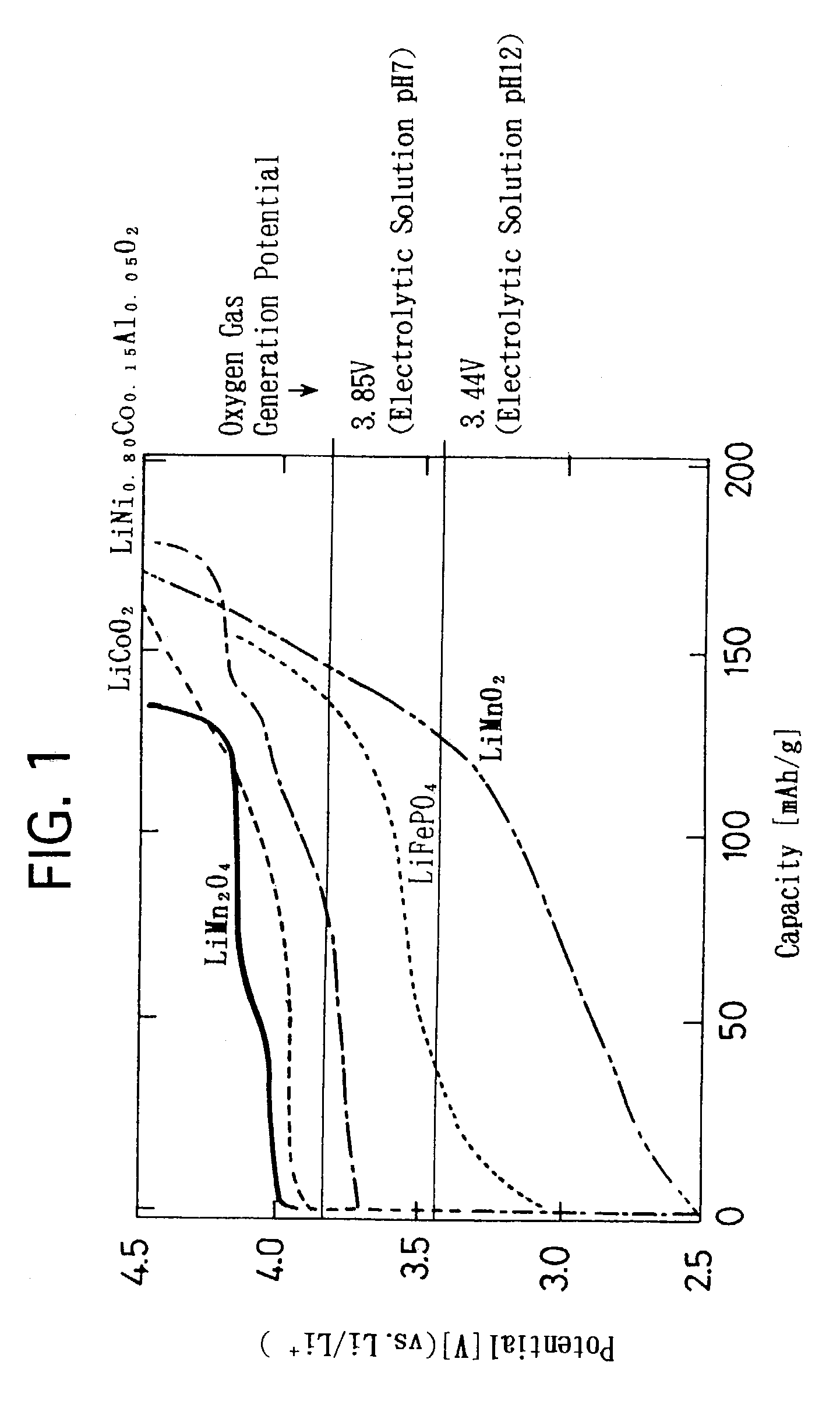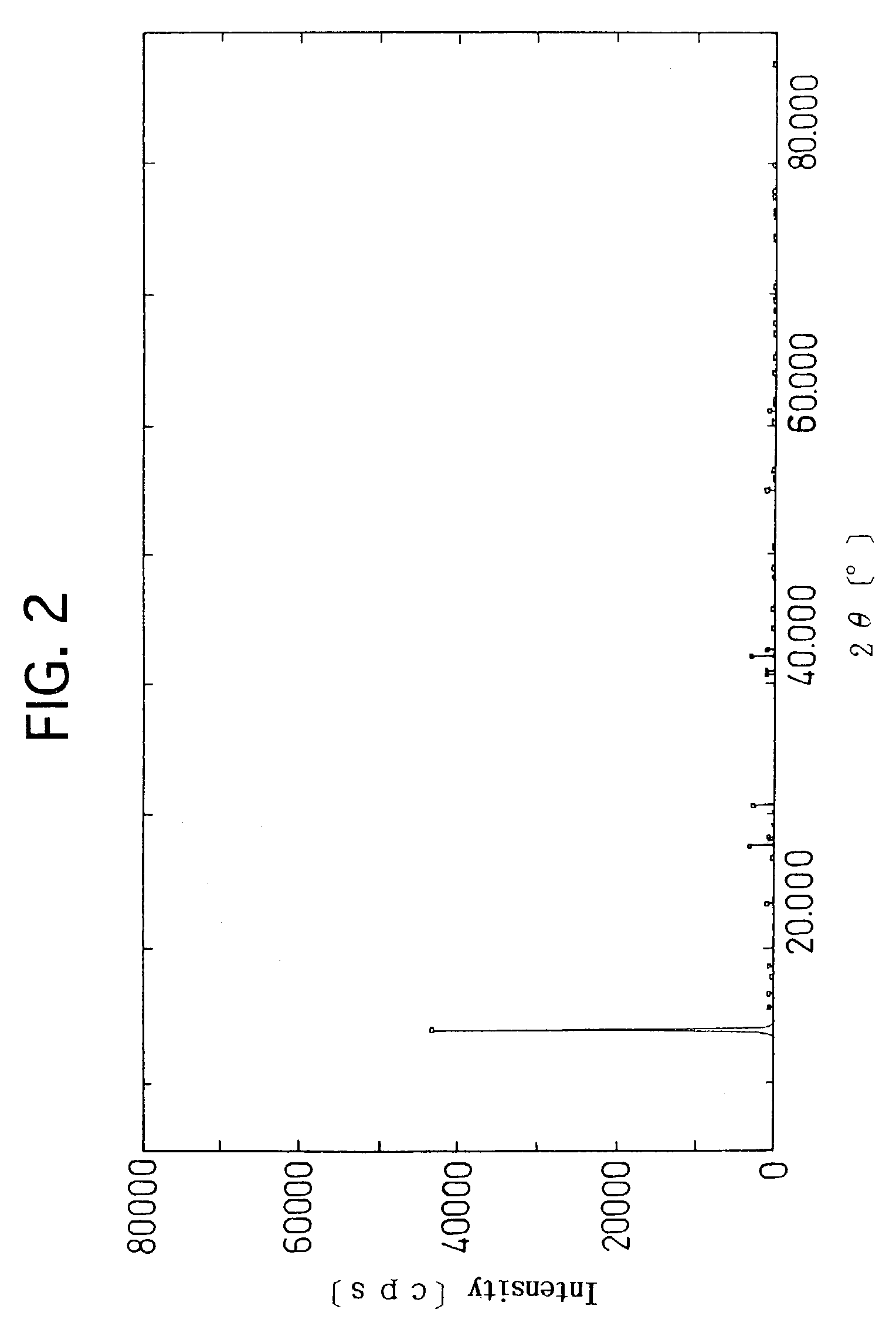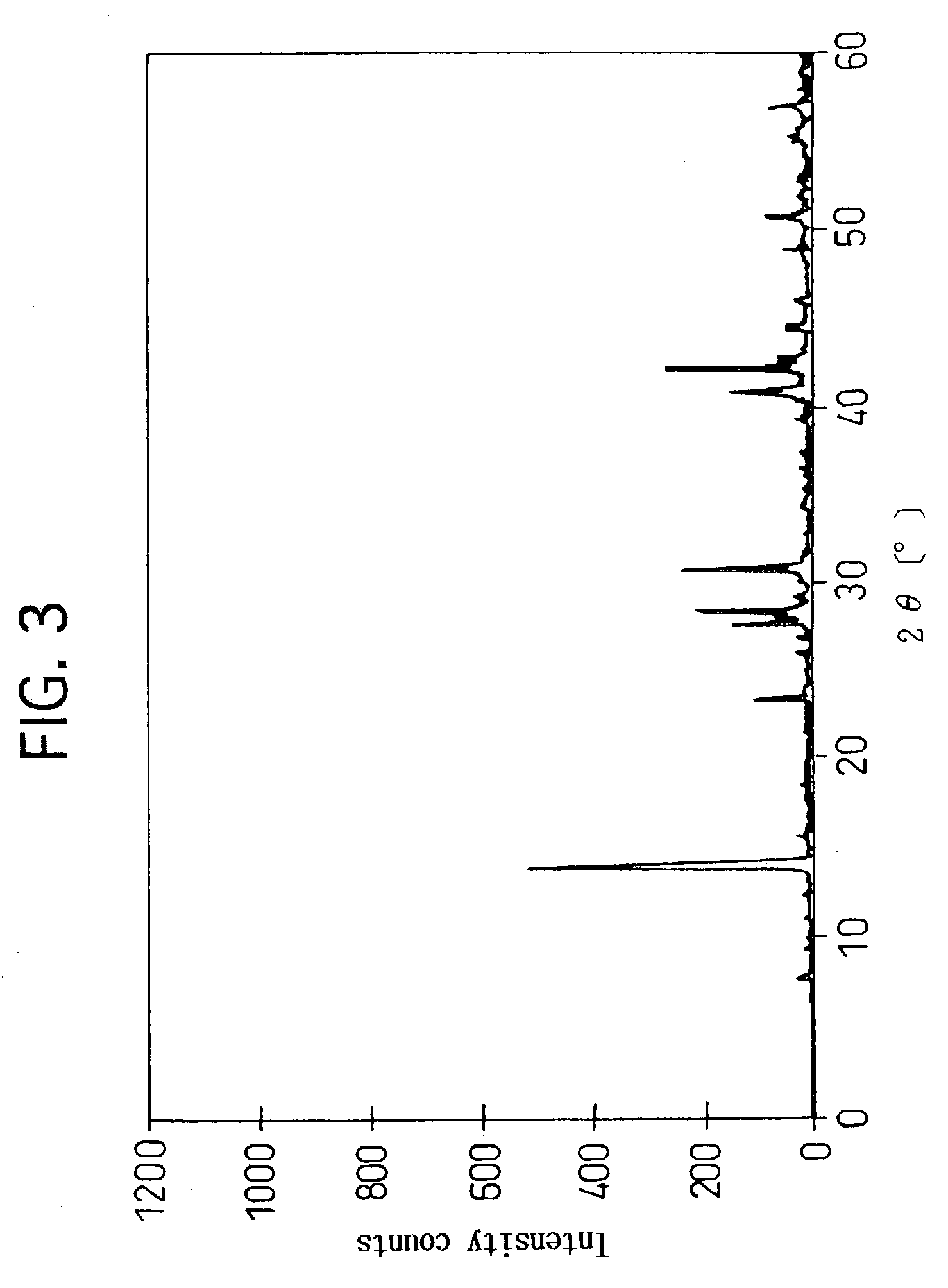Lithium secondary battery
a secondary battery and lithium technology, applied in the field of lithium secondary batteries, can solve the problems of battery constituent materials corrosion, large difficulty in following, consumption of lithium, etc., and achieve the effect of large capacity, large capacity, and easy operation
- Summary
- Abstract
- Description
- Claims
- Application Information
AI Technical Summary
Benefits of technology
Problems solved by technology
Method used
Image
Examples
experimental examples
[0108]Based on the aforementioned embodiment modes, a variety of lithium secondary batteries were manufactured in which the positive electrode active material, the negative electrode active material and the like are varied, and the respective lithium secondary batteries were assessed. Hereinafter, the manufacture of the electrodes of the lithium secondary batteries, and the assessment on the initial discharge capacities and cycle characteristics in the manufactured lithium secondary batteries will be described.
(1) Manufacture of Positive Electrodes
[0109]As positive electrode active materials, a hexagonal layered rocksalt structure lithium-manganese composite oxide expressed by a composition formula LiMnO2, a monoclinic zigzag layered structure lithium-manganese composite oxide expressed by a composition formula LiMnO2, an olivine structure lithium-iron composite phosphorus oxide expressed by a composition formula LiFePO4, and a layered rocksalt structure lithium-nickel composite oxi...
PUM
| Property | Measurement | Unit |
|---|---|---|
| particle diameter | aaaaa | aaaaa |
| particle diameter | aaaaa | aaaaa |
| voltage | aaaaa | aaaaa |
Abstract
Description
Claims
Application Information
 Login to View More
Login to View More - R&D
- Intellectual Property
- Life Sciences
- Materials
- Tech Scout
- Unparalleled Data Quality
- Higher Quality Content
- 60% Fewer Hallucinations
Browse by: Latest US Patents, China's latest patents, Technical Efficacy Thesaurus, Application Domain, Technology Topic, Popular Technical Reports.
© 2025 PatSnap. All rights reserved.Legal|Privacy policy|Modern Slavery Act Transparency Statement|Sitemap|About US| Contact US: help@patsnap.com



